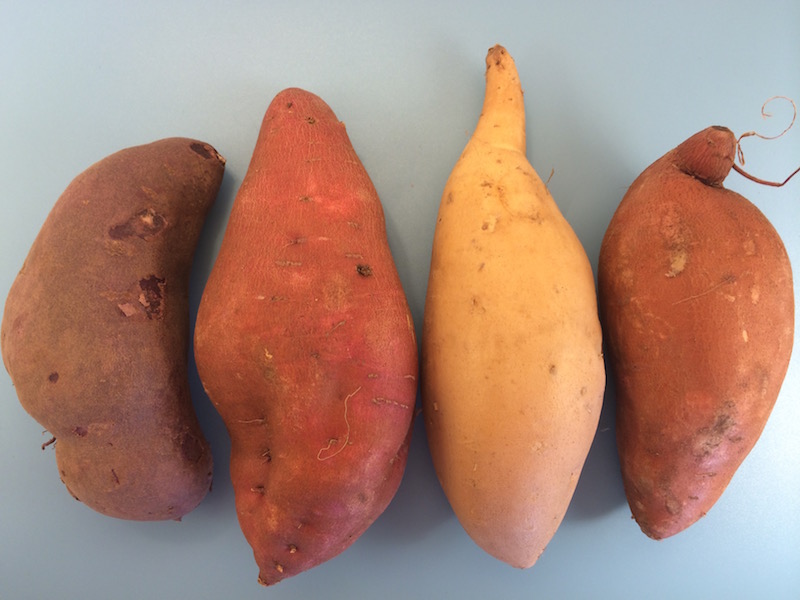With Thanksgiving around the corner, many families across America are purchasing sweet potatoes (or yams) for their big meal. When at the grocery store, you might notice that the term “yam” and “sweet potato” are interchangeable, thanks to USDA labeling requirements. However, there is quite a big difference between yams and sweet potatoes, both physically and nutritionally.
Most of what we see in the grocery store is the root vegetable, sweet potato. Originating from South America, most sweet potatoes are actually grown in the United States. Sweet potatoes can vary in color from a pale skin with bright yellow flesh to the more commonly seen darker orange skin with orange flesh. Sweet potatoes are known to have a thin skin and moist, sweet flesh. Yams are tubers that are grown in various parts of the world, such as Africa, the Carribean, and Asia and are usually available in the U.S. only at ethnic markets. Yams are often bigger than sweet potatoes, have a thick, hard, scaly skin and starchy flesh ranging in color from off-white to yellow to purple. Nutritionally, sweet potatoes contain quite a bit of vitamin A, while yams have relatively none. Vitamin A is very important for your immune system and vision.
If you are looking for some Healthy Dining-approved sweet potato dishes, you could add a side of Sweet Potato Mash (160 calories, 2.5 g fat) to your meal at Ufood Grill or a plain baked sweet potato (320 calories, 5 g fat) from Outback Steakhouse.

